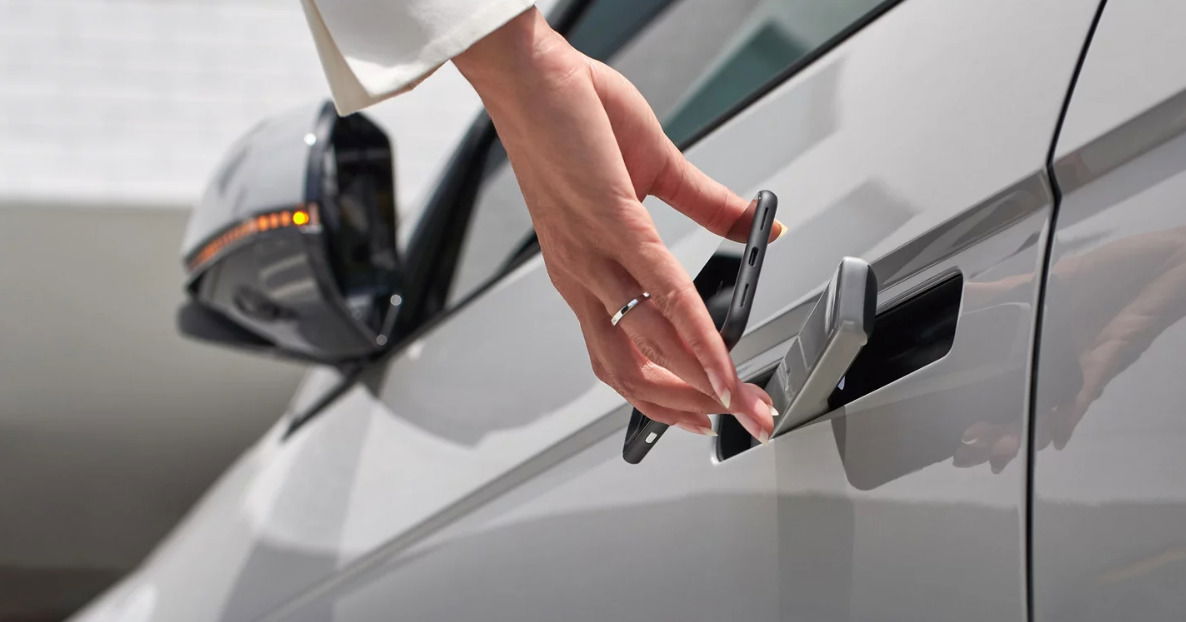If you’ve been hunting specs for the Hyundai Ioniq 6 and suddenly found results that say “4 doors,” “5 doors,” and even queries about whether the 2026 Hyundai Ioniq 6 is “5 doors or 4 doors,” you’re not alone. The Ioniq 6 sits in a styling sweet spot between a sleek fastback and a traditional sedan, and that visual ambiguity — plus how different databases classify body styles — is the root of the confusion.
This review digs into the facts, the sources, and the small details that explain the “Hyundai Ioniq 6 doors number” debate, while also giving you things you usually won’t find in a headline spec sheet.
Short answer (official): it’s a four-door sedan
Hyundai markets the Ioniq 6 as a sedan and U.S. dealer/inventory listings reflect that categorization — you will see “4D Sedan” on window stickers and model pages. Major automotive reviewers and Hyundai’s own U.S. product pages list the Ioniq 6 as a four-door vehicle designed to seat five people across two rows.
What the “4D” shorthand means in practice: it counts driver and passenger doors only (two up front and two in the rear). That’s how OEMs, the EPA classifications, and the bulk of dealer inventories treat the Ioniq 6. If you want a single, authoritative source, go with Hyundai and mainstream automotive reviewers: they call it a conventional four-door sedan.
Why some sources say “5 doors” (and why that’s not always wrong)
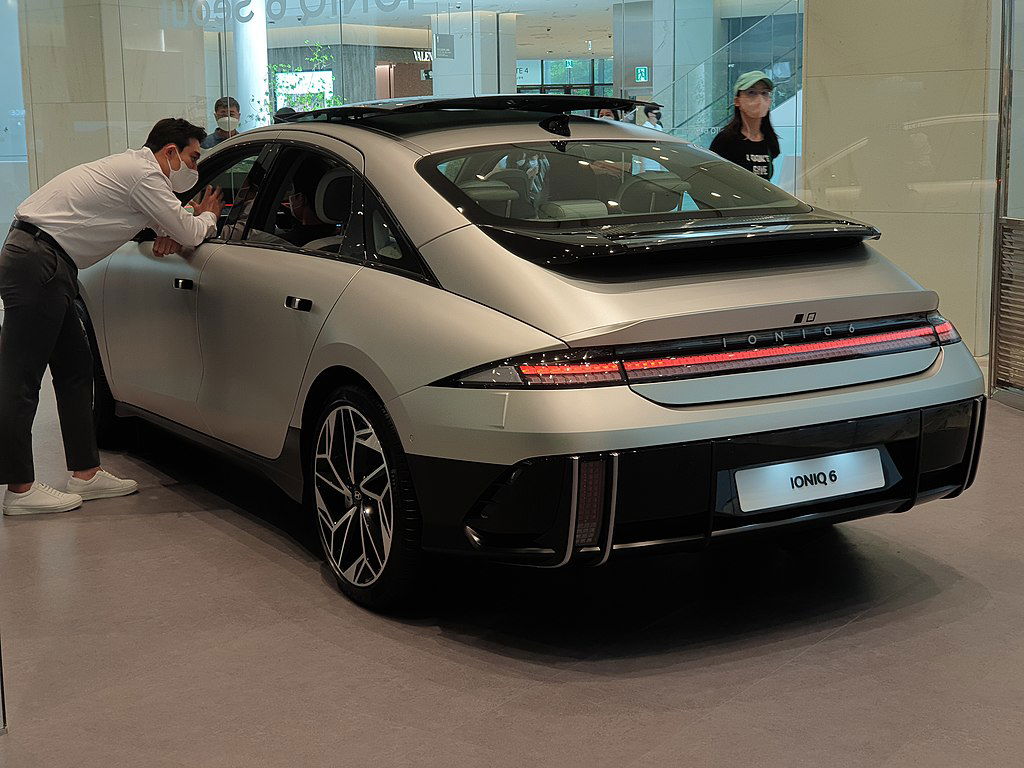
Here’s where nuance matters. Automotive databases and some European market spec sheets sometimes use “5-door” to describe cars with a rear opening that is more than just a lip of a trunk — i.e., hatchbacks, liftbacks, and fastbacks. Visually, the Ioniq 6 is a streamlined fastback with a sloping rear deck.
That silhouette, especially if a database’s taxonomy is tilted toward counting any liftback-style rear access as a “door,” can trigger a 5-door classification. You’ll see that more often in comparison tools that juxtapose hatchback-style cars (for example, a “MINI 5 Door vs IONIQ 6” comparison) even though Hyundai’s official classification remains “sedan.”
So, a “5-door” label is typically a classification mismatch rather than evidence of a literal extra hinged side door. The Ioniq 6 does not have a third side door on either flank — it’s not a shooting-brake or a three-door coupe — but its rear profile sometimes causes data services to round it up into hatchback-style buckets.
2025 vs 2026: Did Hyundai change the door count?
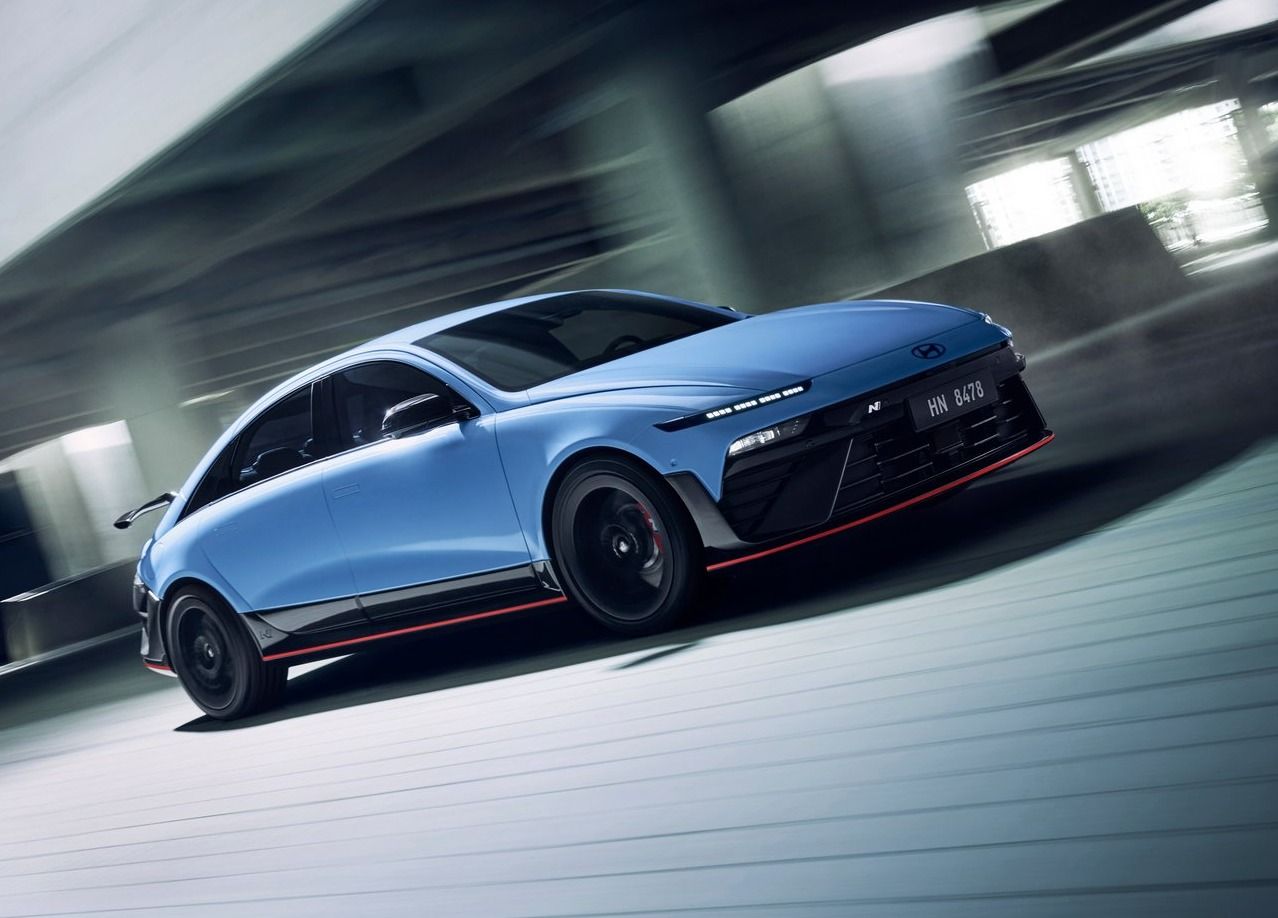
2026 Ioniq 6 N.
No. Across the 2025 model and the 2026 refresh, Hyundai has not changed the physical door count. The 2026 Ioniq 6 is a facelifted version with styling and interior updates (and a new high-performance N variant arriving in the 2026 model cycle), but those updates are cosmetic and mechanical rather than structural in the sense of adding or removing passenger doors.
In other words, the question “2026 Hyundai Ioniq 6 5 doors or 4 doors” is answered the same as for 2025: Hyundai lists it and sells it as a four-door sedan.
Practical consequences for buyers (what the door count actually affects)
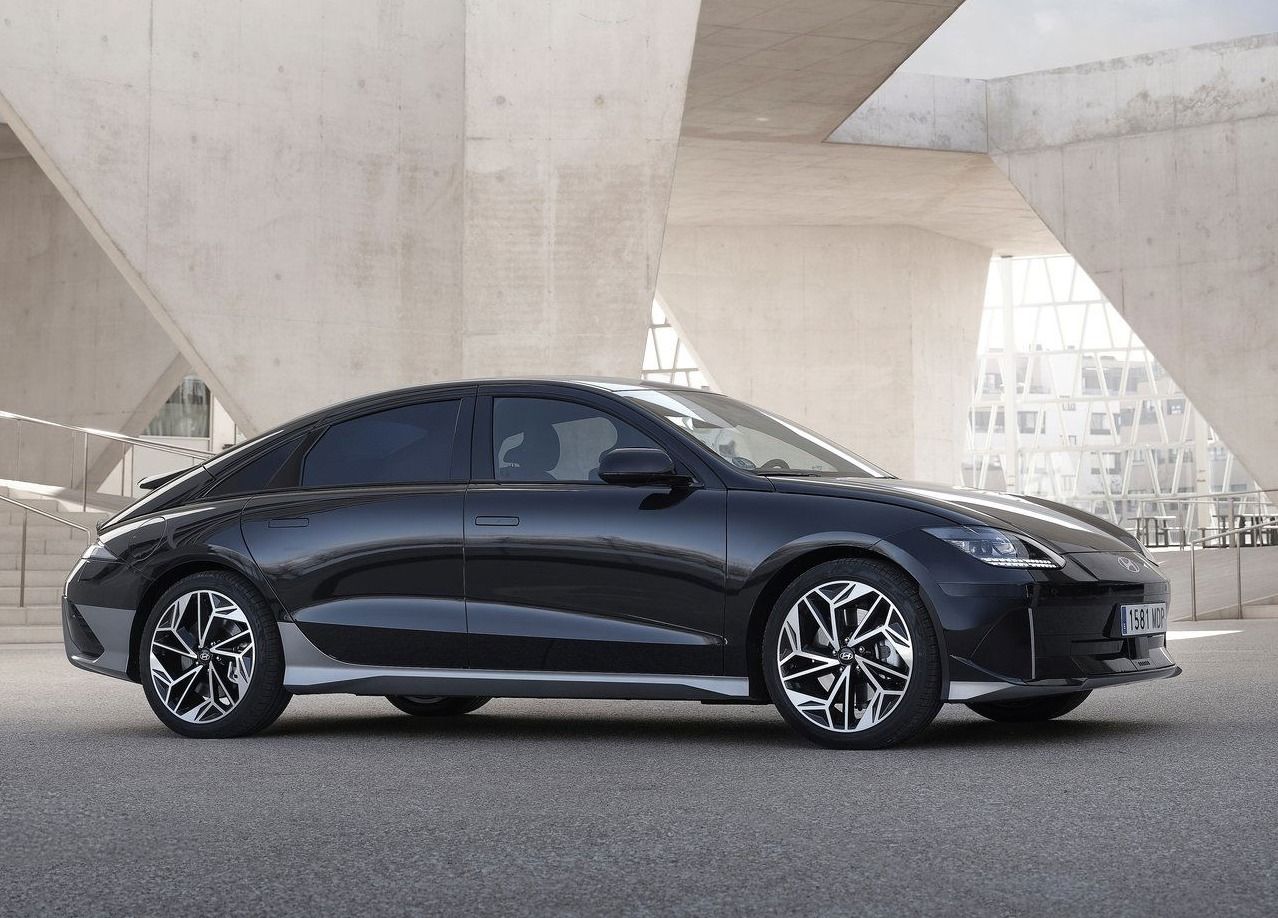
Cargo access vs. trunk lip:
If you’re used to SUVs or hatchbacks, know that the Ioniq 6’s boot opens like a trunk on most market spec examples — it’s not a van-wide hatch. That changes how you load very long or bulky items.
For most owners the difference is small, but if you regularly load sheet goods, bicycles without disassembly, or large pet crates, this matters. Confirm with a dealer if you need an extra-wide hatch opening. (Tip: bring the item to the showroom or check trunk opening measurements.)
Rear seat ingress/egress:
Because it’s a proper four-door sedan, rear-seat entry is conventional and easy; you aren’t dealing with awkward two-door access or tiny coupe openings. Families and regular back-seat riders will appreciate the full rear doors and the flat floor that EV platforms enable.
Insurance and registration:
Some regional registration/insurance forms use “body type” fields and will accept “sedan (4-door).” If you see a 5-door listing in a database, cross-check official window sticker PDFs or Hyundai’s build/configure pages to avoid incorrect documentation.
Little details you won’t always see on spec pages (why they matter)
- “4D Sedan” vs. “Fastback” language: Dealers will often abbreviate to “4D Sedan,” while Hyundai’s press materials and design write-ups call the Ioniq 6 a “streamliner” or “fastback-styled sedan.” That difference in tone creates the perception that the car sits between segments even though it doesn’t change the door count.
- Aftermarket roof/rim/cargo mods: The Ioniq 6’s fastback roofline means roof rails don’t sit as tall as on an SUV, so rooftop cargo systems need low-profile mounts. That’s a small but real user experience difference compared with traditional sedans and hatchbacks.
- Trim and door hardware: On several trims (and especially on refreshed 2026 models), Hyundai refined door trim materials, armrest design, and button placement to feel more premium — not a change to door count, but to how the doors feel and function for daily use. These tactile upgrades are often omitted from spec-only pages but are noticeable on longer drives or when you use the car as a daily driver.
Hyundai Ioniq 6 Doors Number: 2025 vs 2026 Models Explained
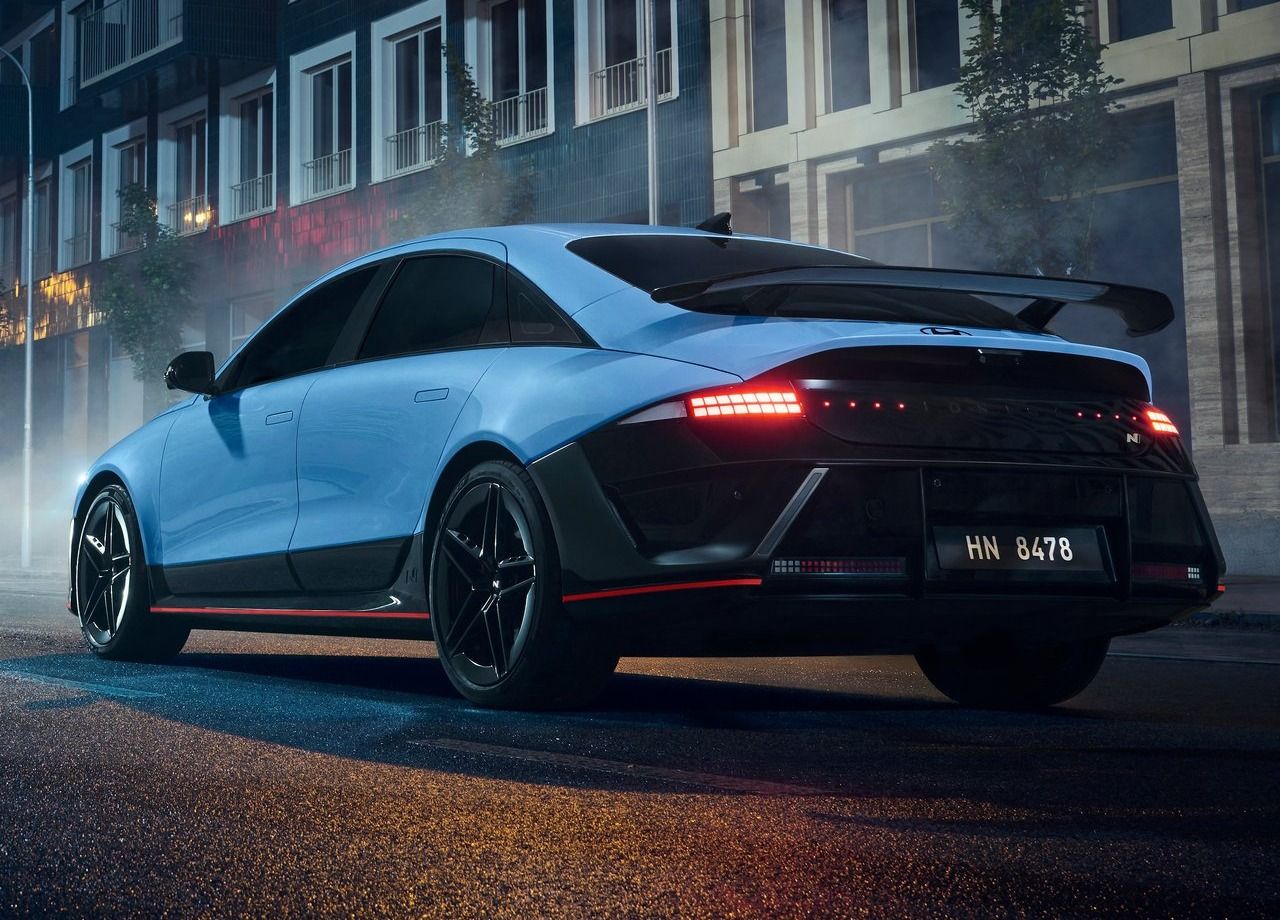
Ioniq 6 N.
The 2025 Hyundai Ioniq 6 and the refreshed 2026 model share the same core identity as sleek, four-door electric sedans, but subtle refinements set them apart. The 2025 Ioniq 6 introduced Hyundai’s bold “streamliner” design with a fastback silhouette, impressive aerodynamics, and a focus on efficiency.
Its cabin emphasized sustainability, with eco-friendly materials and tech features like dual 12.3-inch displays. For 2026, Hyundai sharpened the formula rather than reinventing it. The design gains small tweaks to lighting elements and trim options, while the interior sees improved materials and software refinements for a more premium feel.
Most notably, 2026 brings the much-anticipated Ioniq 6 N performance variant, elevating power and handling for enthusiasts. Importantly, the “doors number” debate remains unchanged — both the 2025 and 2026 models are officially four-door sedans, despite some confusion online. In short: 2025 established the benchmark, and 2026 polishes and expands the lineup.
How To Open Ioniq 6 Door
Opening the Hyundai Ioniq 6 door is simple once you understand its flush handle design. Unlike traditional cars, the Ioniq 6 uses aerodynamic pop-out door handles that sit flush against the body to reduce drag. To open, press the rear portion of the handle; the front end then pivots outward, creating a grip you can pull to unlatch the door. This works on both the driver and passenger sides.
For models with keyless entry, approach the car with the fob in your pocket or bag, and the handles may automatically present themselves, depending on settings.
Inside, the Ioniq 6 replaces conventional mechanical latches with electronic door release buttons located on the armrests. Simply press the button, and the door electronically disengages the latch. In case of emergencies, Hyundai has included a manual release lever inside the cabin so you’re never locked in.
A final, practical shopping checklist
- Look at the window sticker or the “body style” field on the dealer listing — that’s authoritative for sales paperwork. Dealers list the Ioniq 6 as a 4D sedan in the U.S. and many other markets.
- If cargo access matters, measure the trunk opening — don’t rely on “sedan” vs “hatchback” labels. The Ioniq 6’s fastback lines can mask whether the opening will accept your big items.
- Test rear passenger comfort — the Ioniq 6’s EV platform gives a flat floor, which often improves rear comfort relative to ICE sedans in the same size class.
- When in doubt, cross-check Hyundai press pages, major reviewers, and dealer inventory data — those together will clear up any “Hyundai Ioniq 6 doors number” ambiguity.
